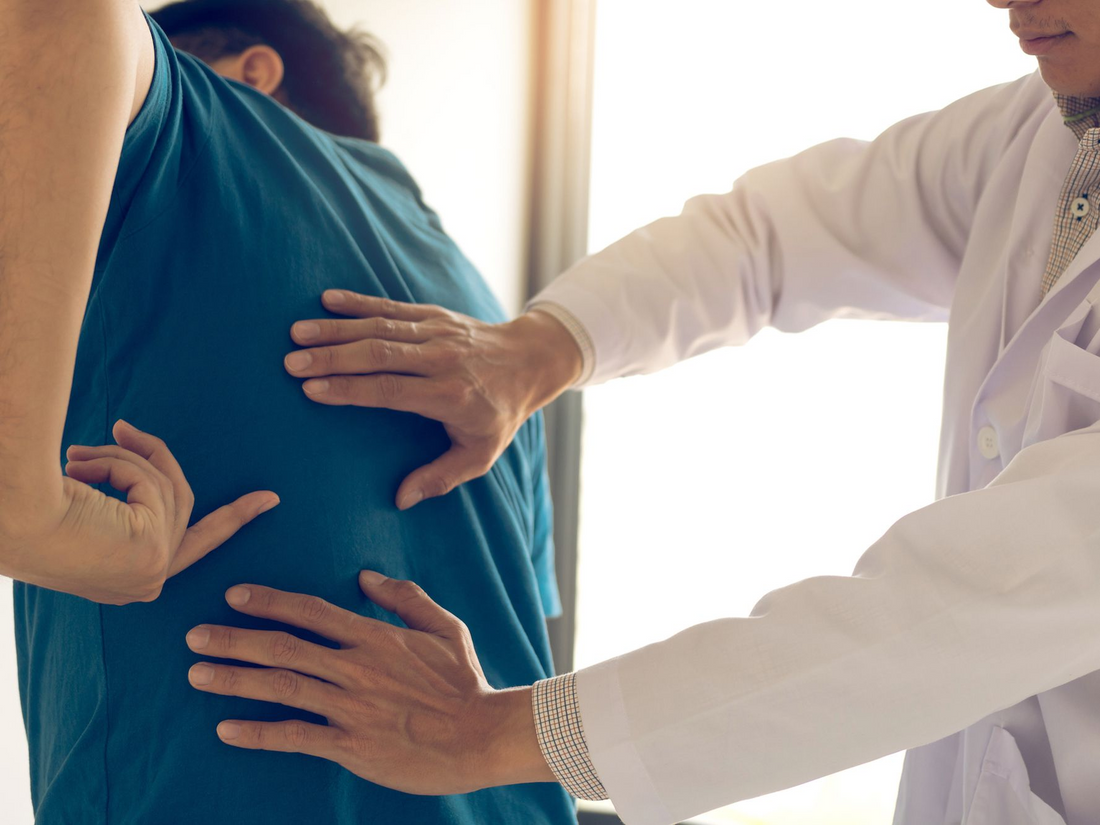
HOW BACK BRACES CAN HELP YOU EASE AND TREAT A LUMBAR COMPRESSION FRACTURE
Share

The spine of a human being is comprised of bones called vertebrae. These bones are arranged in a column from top to bottom and function as support structures for the head, neck, trunk, and limbs. They also protect the spinal cord. The vertebral column has five regions: cervical, thoracic, lumbar, sacral, and coccyx.
The lumbar region of the spine consists of 5 vertebrae. A Lumbar compression fracture can be caused by a few mechanisms such as falling on ones buttocks, car accidents (forced flexion or extension in the region), or can stem from a different health problem such as osteoporosis or other malignancies in which there is decreased bone density. This condition is very painful and can immobilize a patient.
CAUSES

There are several causes of vertebrae bone fracture. One of the main reasons is trauma from an accident like a car crash. The lumbar fracture is typical in this kind of situation due to the inability of lower back vertebrae to withstand sudden and extreme pressure.
Another cause of lumbar vertebrae fracture is degeneration of vertebral bones. Over time, the vertebrae can wear out and crumble due to overuse, disease, or poor nutrition. Degenerative vertebrae fracture when they experience even the slightest pressure from body weight or incorrect posture.
Lumbar fractures also result from a disease called osteoporosis. Osteoporosis is a disease that results in fragile bones and makes them susceptible to simple everyday stress.
SYMPTOMS
The symptoms of a lumbar vertebrae fracture may differ from one patient to another based on the intensity and location of the trauma. The most common symptom among patients is pain in the lower back. However, other patients also experience irritation and numbness down the leg.
HOW CAN BRACING HELP YOU?
Either an Brace can help you heal and feel better faster. These braces support or restrain certain motions of the body. In this case, it works by restricting your mid to lower back from moving excessively and puts less pressure on your spine. This restriction of motion will allow the area to heal quicker and protect from further injury.
Health specialists sometimes recommend a lumbar compression fracture brace because it protects you from further injuries. One of the most common complications in patients with lumbar fractures is spinal cord injury. A well-fitted brace can help you prevent this problem while reducing pain and swelling in your back.
MEDICATION AND SURGERY
Depending on the severity of the symptoms, pain medication and anti-inflammatory medications can help relieve some of the pain and inflammation in the area. This treatment goes hand in hand with the ability of a brace to prevent further injury. However, in severe cases where the vertebrae have crumbled, your doctor might recommend surgery such as kyphoplasty to reinforce the vertebrate with a cement type filling.
PHYSICAL THERAPY
Physical therapy is vital in patients with lumbar fractures, especially those who have had surgery. After surgery, your doctor can recommend physical therapy to reduce the time it takes for your body to heal and strengthen the surrounding musculature. Recommendations such as breathing exercises could improve your health significantly.
REST
The most important thing you can do when injured is to get enough rest and limit motion. If you find yourself experiencing symptoms of lumbar compression fracture, constrain the movements of your lower back as much as possible before consulting a doctor. It is a good idea to rest and apply an ice pack to the affected area.
WEAR BRACES
With or without surgery, wearing a back brace for a lumbar compression fracture can help you speed up your recovery, reduce pain, swelling and prevent further injuries. Specialized medical braces have designs that help patients with back problems. Speak with your medical professional about how a back brace can benefit your recovery.










